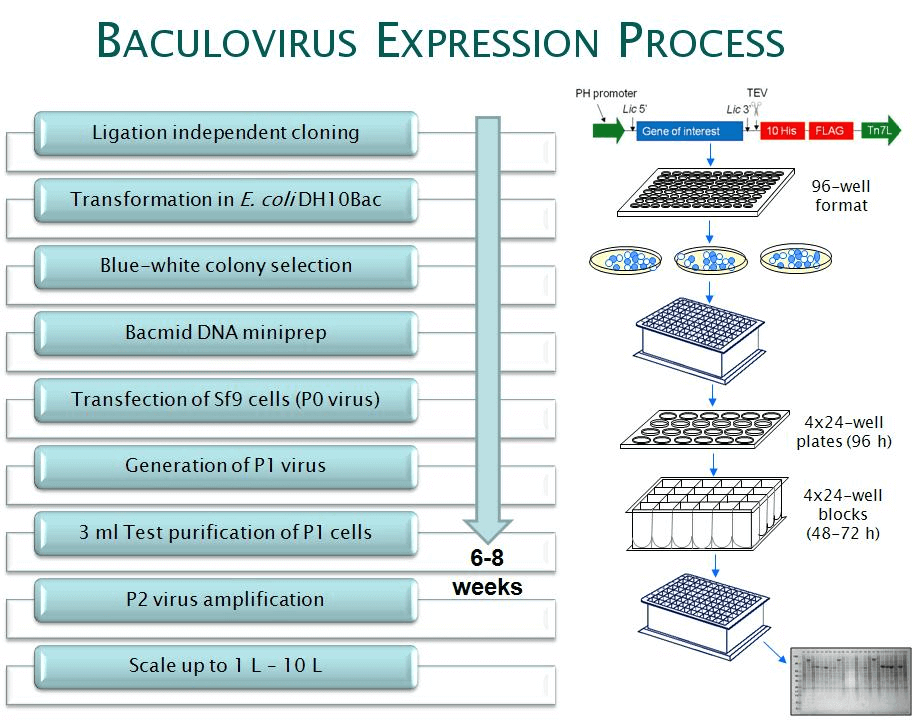Baculovirus Expression
Baculovirus expression vector system (BEVS) has been widely used for the production of recombinant proteins in insect cells. It is one of the most powerful, robust, and versatile eukaryotic expression systems available. The BEVS is a helper-independent viral system which has been used to express heterologous genes from many different sources, including fungi, plants, bacteria and viruses, in insect cells.
Given its development speed and versatility for the expression of a wide range of protein families, the BEVS offers multiple advantages for protein production in a variety of applications. The large cloning capacity renders baculovirus an ideal tool for the synthesis of virus-like particles (VLP), which generally require simultaneous expression of multiple viral structural proteins for self-assembly.
Choosing the right system for foreign gene expression can be particularly important in obtaining biologically active recombinant protein. Several unique features of the BEVS have made it the system of choice for many applications.
Advantages:
- Proper post-translational modification, because insect cells are higher eukaryotes
- A high capacity for multiple genes or a large insert, because of the huge and flexible viral genome (130 kb)
- Biosafety, because baculovirus naturally does not infect humans
- A very high yield driven by the strong promoters polyhedrin or p10 and high titers up to 108 pfu enable large-scale protein expression
- N- and C-Terminal tag for easy purification
- Protease sites enable removal of N- or C-terminal tag yielding a native protein
- Capacity to express large inserts and unspliced genes
- Simultaneous expression of multiple genes
Disadvantages:
- Baculovirus infection ultimately results in cell death and lysis in a few days, because of the compromise of post-translational machinery and secretory pathway.
- Glycosylation in insect cells differs in many aspects from in mammalian cells.
- Inefficiency to properly process proteins that are initially synthesized as large inactive precursor proteins.
Applications:
- Virus-like particles (VLPs) potential vaccines which represent a novel class of subunit vaccines that are able to stimulate efficiently cellular and humoral immune responses against viral agents.
- "On demand" production of specific proteins with theurapeutic value in heterologous expression systems.
- Commercial synthesis of glycoproteins originating from vertebrate themselves or from vertebrate viruses.
- A great potential for future uses of baculovirus as effective gene therapy vector.
 Figure 1. High throughput screening process for baculovirus expression systems
Figure 1. High throughput screening process for baculovirus expression systems
Please see Creative Biostructure’s cell-free and cell-based expression services.
Reference:
- Yu-chen HU. Baculovirus as a highly efficient expression vector in insect and mammalian cells. Acta Pharmacologica Sinica 2005 Apr; 26 (4): 405–416.
- Go ́mez-Sebastia ́n S, Lo ́pez-Vidal J, Escribano JM (2014) Significant Productivity Improvement of the Baculovirus Expression Vector System by Engineering a Novel Expression Cassette. PLoS ONE 9(5): e96562. doi:10.1371/journal.pone.0096562
- Malgorzata Rychlowska et al. Application of Baculovirus-Insect Cell Expression System for Human Therapy. Current Pharmaceutical Biotechnology. Volume 17, 15 Issues, 2016